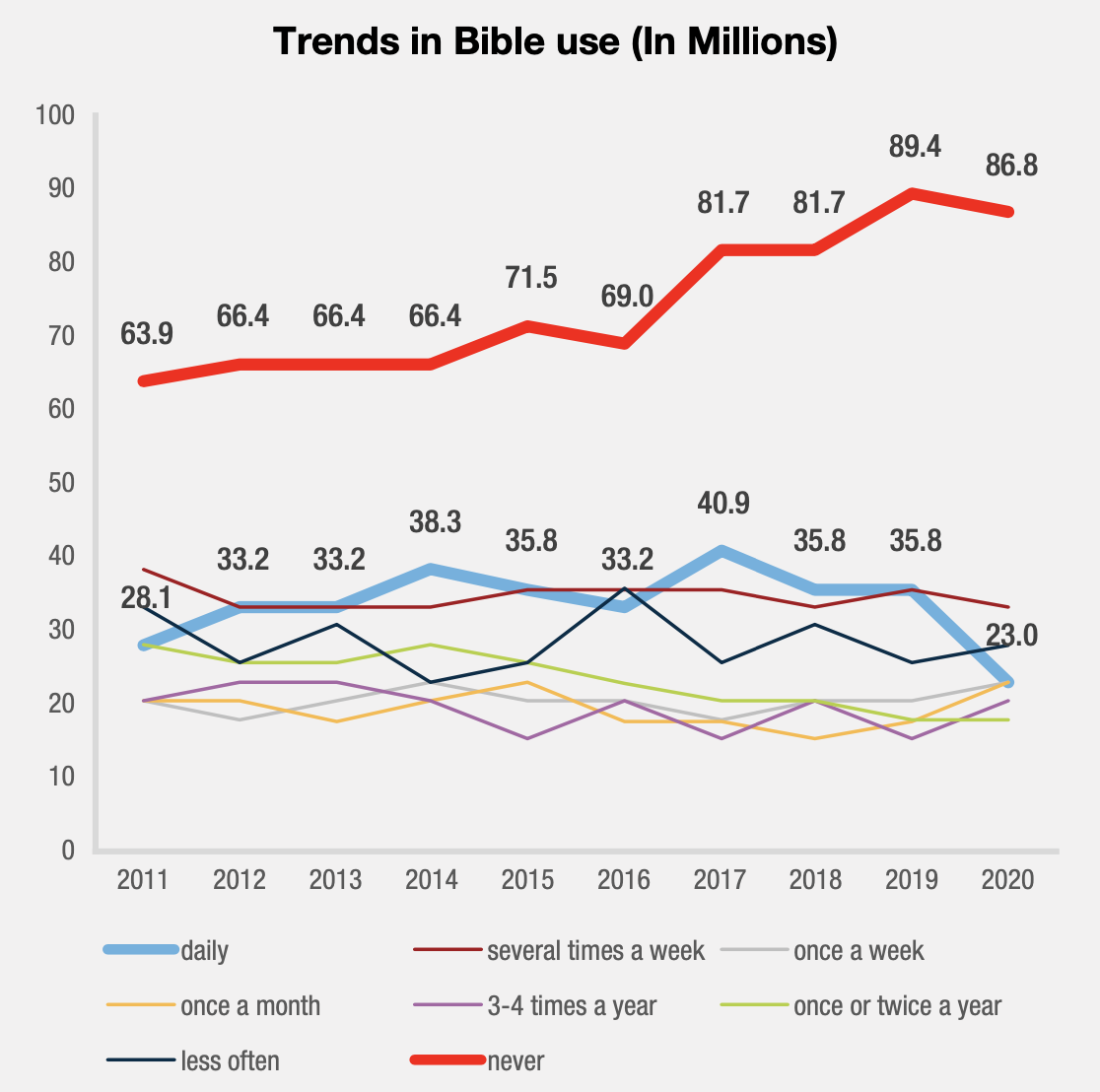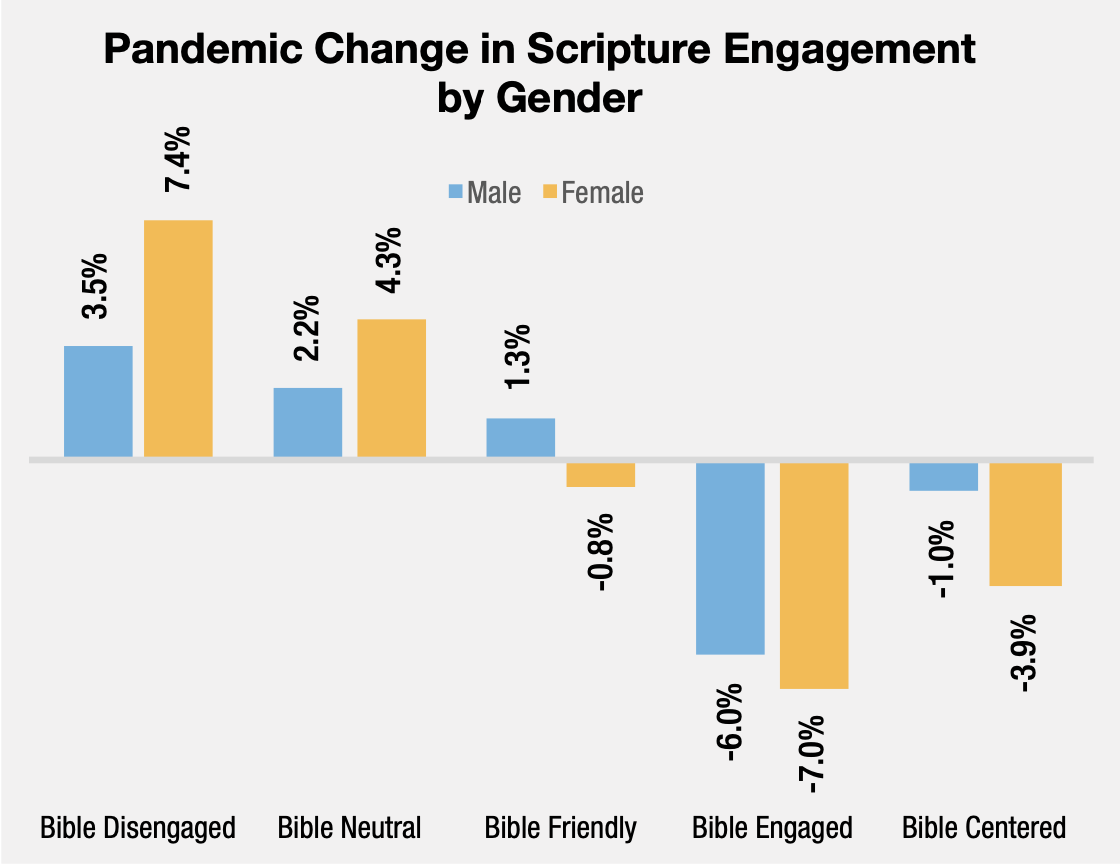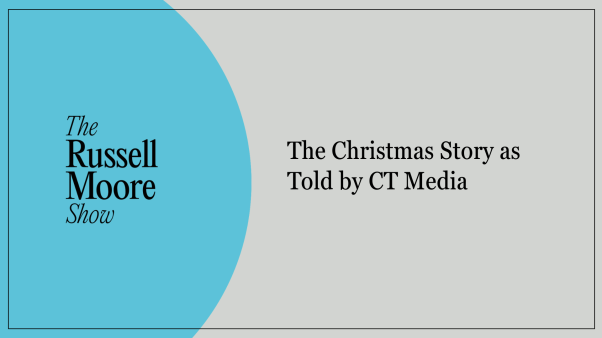The COVID-19 pandemic is shifting Americans’ Bible engagement, with many who are socially distanced from their spiritual communities turning to Scripture less and those who have lost loved ones to the virus reading it more.
Between early 2019 and 2020, the percentage of US adults who say they use the Bible daily dropped from 14 percent to 9 percent, according to the State of the Bible 2020 report released today by the Barna Group and the American Bible Society (ABS).
A decrease of 5 percentage points in a single year was unprecedented in the annual survey’s 10-year history; between 2011 and 2019, daily Bible readers had basically held steady at an average of 13.7 percent of the population.
But the decline continued during the initial months of the coronavirus pandemic, and by June, the percentage of daily Bible users had dropped to 8.5 percent.
Amid the pandemic, a larger decline occurred among the Americans who say their choices and relationships are shaped by the Bible, a group ABS calls “Bible engaged.” In January, 27.8 percent of American adults were Bible engaged. By June, after months of quarantine and church closures, that figure was down to 22.6 percent.
“This study supports the idea that the church plays a significant role in benefitting people’s wellbeing and Scripture engagement,” said John Farquhar Plake, ABS director of ministry intelligence. “To increase Scripture engagement, we must increase relational connections with one another through the church. The pandemic—and now this survey—have shown that when relational church engagement goes up, so does Scripture engagement, but when it goes down, Scripture engagement drops with it.”
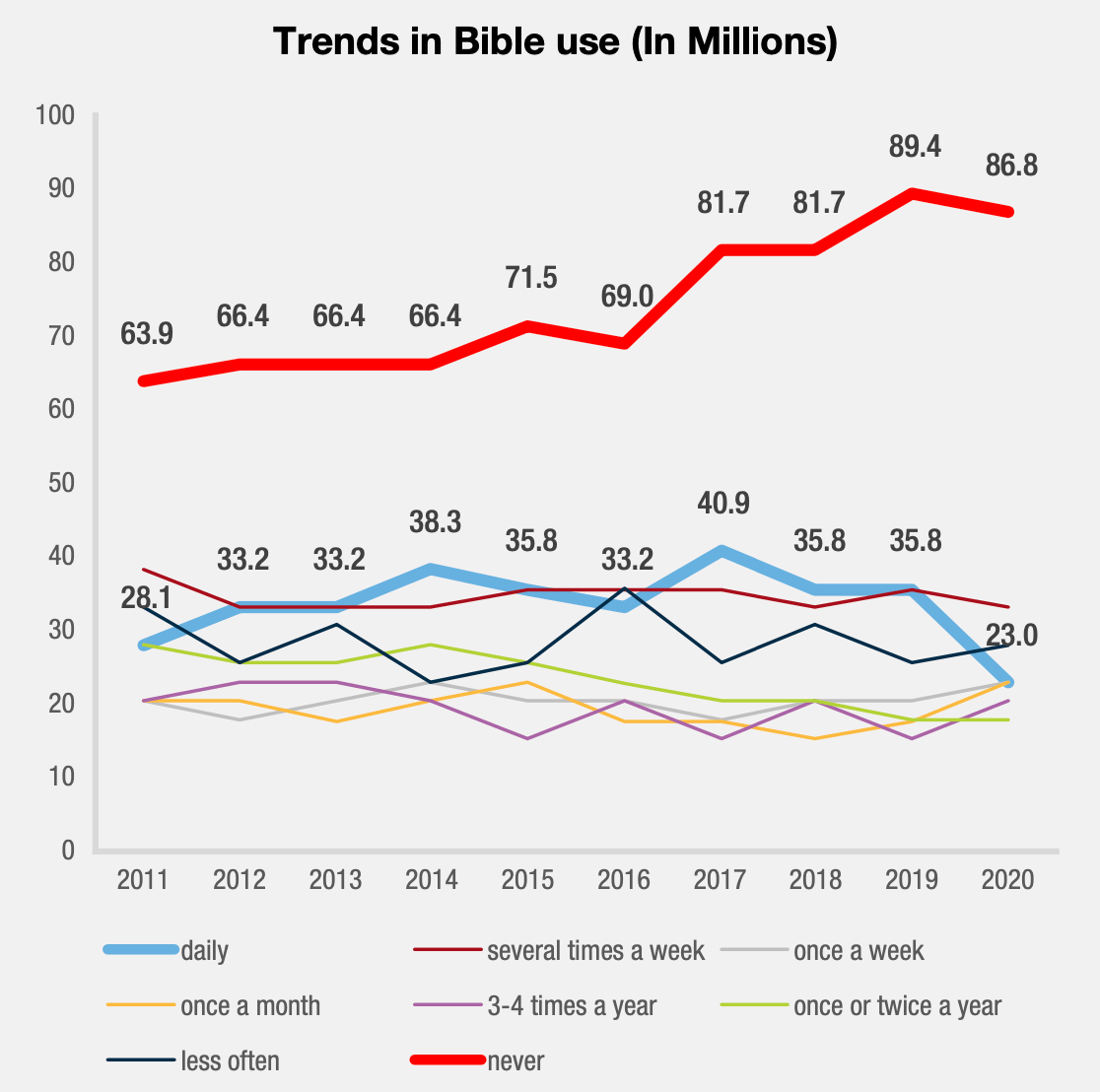 State of the Bible 2020 / ABS and Barna Group
State of the Bible 2020 / ABS and Barna GroupOverall, about a fifth (22%) of US adults interact with the Bible multiple times a week, not counting Scripture use at church, according to a January survey. More than a third (35%) of Americans say they never read the Bible—unchanged from last year but up from 25 percent at the annual report’s inception in 2011. Sixty percent read the Bible four times per year or less.
In January, women were slightly more Bible engaged than men (19.1% vs. 18.8%) and 2 percent more likely than men to be “Bible centered” (a Barna and ABS designation for individuals with the highest level of influence from Scripture in their daily lives).
But that changed when the pandemic hit. Women lost more ground than men in Bible engagement, and levels of engagement evened out among the genders for the first time in the survey’s history. Women’s Bible engagement dropped by 7 percentage points between January and June, compared with 6 percentage points for men. The number of women considered “Bible centered” in January dropped by 3.9 points by June compared with 1 point for men.
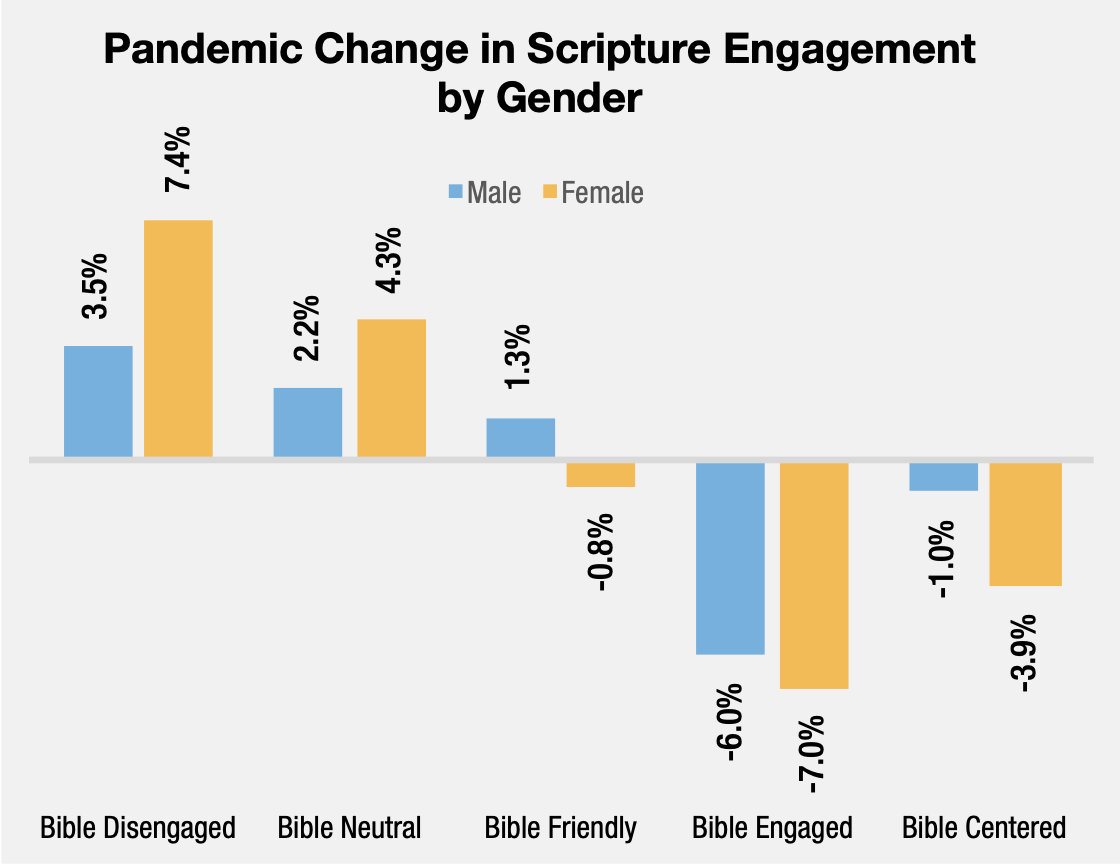 State of the Bible 2020 / ABS and Barna Group
State of the Bible 2020 / ABS and Barna GroupThe drop could be related to life adjustments women were forced to make as they juggled work from home and caring for children who previously attended school or daycare, the report speculated. A lack of in-person connection with churches and small groups also could have played a role, according to the report.
“You can’t download a hug,” said Donald Whitney, professor of biblical spirituality at the Southern Baptist Theological Seminary. Lack of encouragement from “physical presence” with other believers “can diminish our engagement in the spiritual disciplines because when we’re together, we’re encouraged to stay faithful to the things of God.”
One way to reengage with Scripture is by meditating on it, said Whitney author of Spiritual Disciplines for the Christian Life. Christians should “read big, meditate small,” he said, reading a larger passage and then spending a few minutes thinking about one verse or phrase. Praying the passage and coming up with an illustration are two ways of mediating suggested by Whitney.
Measuring the pandemic’s affect on American spirituality was a major reason ABS supplemented its January survey of 2,010 people, conducted alongside Barna, with a June poll of 3,020 Americans. The pandemic doesn’t seem to have changed the overall percentage of Bible readers, according to the follow-up study, but Americans who lost loved ones to COVID-19 were more likely to increase their Bible use.
About half (49%) of Americans with a family member living in their household who died of coronavirus said they increased their use of the Bible—2.3 times more than average. Thirty-six percent of those with a neighbor who died of the virus increased their Bible use (1.7 times more than average), and 33 percent of those with a close personal friend who died increased their use (1.6 times more than average).
When the pandemic hit in March, there were initial signs it might be having an overall positive effect on American spirituality. Three of the largest online evangelism ministries—Global Media Outreach, the Billy Graham Evangelistic Association, and Cru—all reported increases of people seeking online information about knowing Jesus. The spike in curiosity was corroborated by ABS, which found more Americans exploring the Bible for the first time in June than January.
But apparently the spike in curiosity didn’t translate into engagement. In June 13.1 million fewer Americans were Bible engaged than in January. Within that overall decrease, the “Bible centered” segment was most impacted, decreasing by 9.7 million.
Church closures during the pandemic likely impacted the decrease in Bible engagement, according to ABS.
“Faith communities have demonstrated incredible resilience, innovation, and empathy through the pandemic,” ABS president and CEO Robert Briggs said. “But this survey reveals that a big opportunity still remains for Christian organizations to make an impact on Scripture engagement.”
During the pandemic-necessitated lockdown, 48 percent of practicing Christians met virtually with their churches using a streaming service that allowed them to watch but not be seen or heard, according to ABS, and 14 percent did not participate in any Christian church services.
Chris Hall, president of the spiritual formation ministry Renovaré, said disruption of life rhythms likely hurt Bible engagement. Prolonged stress also could have affected Christians’ ability to digest and live out Scripture, he said.
To counter a pandemic-prompted morass in Bible engagement, Hall said, “learn to read the Bible in a new way.” That could include using a Bible app that plays music as a person reads or a Bible app that reads a selected passage aloud over and over.
“Think about the possibilities that the pandemic is offering,” he said, “rather than simply what is negative.”
The annual report also showed that millennials read the Bible more frequently than any other generation, with 26 percent reading it multiple times each week. That’s consistent with previous findings that practicing Christian millennials know the Bible as well as or better than their parents and grandparents. Adults aged 74 and up are the least likely age group to read their Bibles multiple times each week, with only 10 percent doing so.
While most Bible readers (65%) prefer a printed version, millennials are about as likely to read the Bible digitally (52%) as they are in print (48%). Americans who live in a household that owns a Bible (77% of the population) are as likely to use a Bible app as those without a Bible in the house (56% vs. 55%).
African Americans have the highest level of Scripture engagement among racial groups in America, another finding consistent with longstanding trends. Some 27 percent of African Americans are Bible engaged, compared with 24 percent of Hispanics, 18 percent of Asians, and 17 percent of Anglos.
ABS plans to publish additional analysis of Americans’ Bible engagement each month between August and December.
David Roach is a writer in Nashville.


